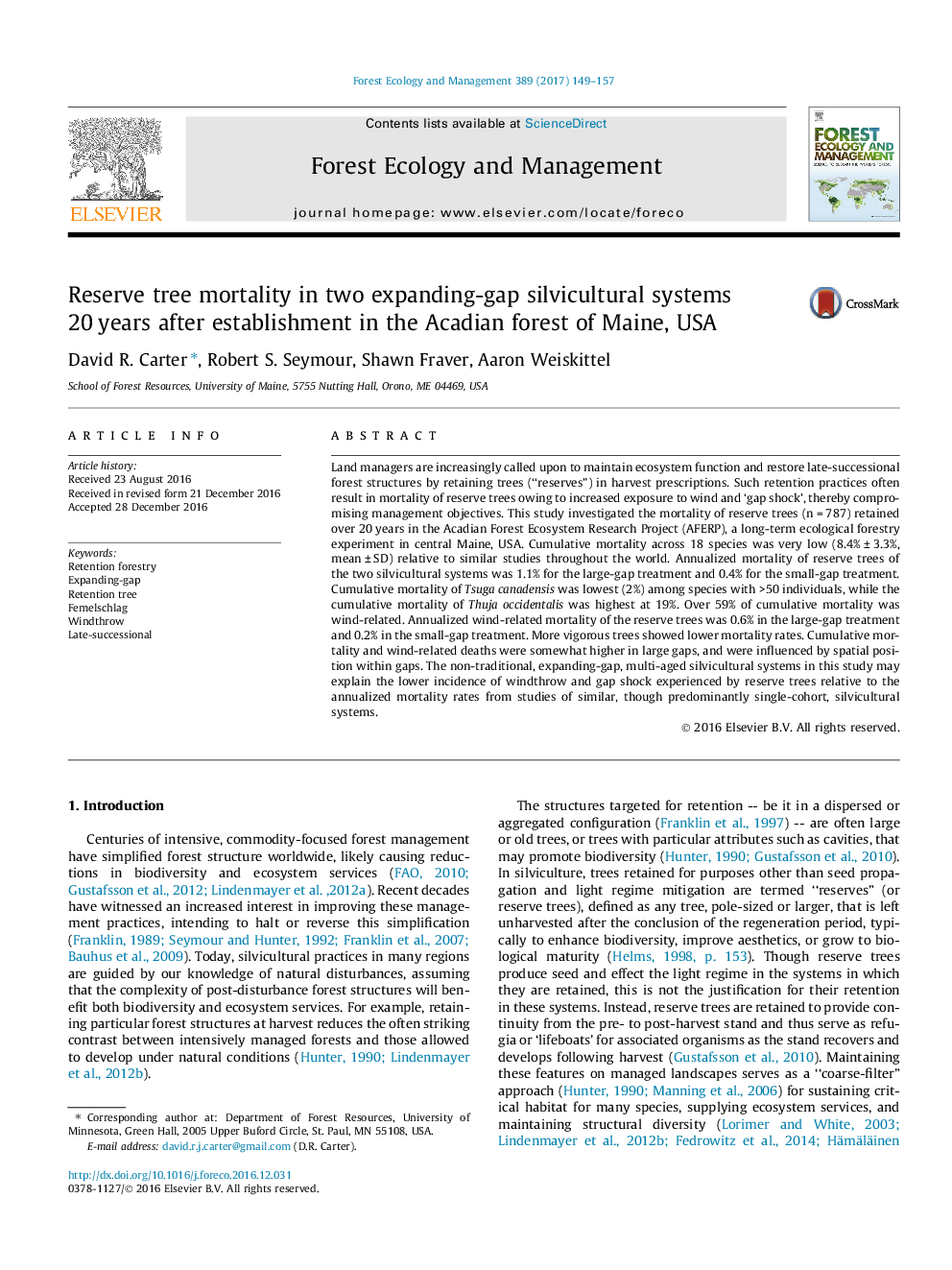| Article ID | Journal | Published Year | Pages | File Type |
|---|---|---|---|---|
| 4759498 | Forest Ecology and Management | 2017 | 9 Pages |
Abstract
Land managers are increasingly called upon to maintain ecosystem function and restore late-successional forest structures by retaining trees (“reserves”) in harvest prescriptions. Such retention practices often result in mortality of reserve trees owing to increased exposure to wind and 'gap shock', thereby compromising management objectives. This study investigated the mortality of reserve trees (n = 787) retained over 20 years in the Acadian Forest Ecosystem Research Project (AFERP), a long-term ecological forestry experiment in central Maine, USA. Cumulative mortality across 18 species was very low (8.4% ± 3.3%, mean ± SD) relative to similar studies throughout the world. Annualized mortality of reserve trees of the two silvicultural systems was 1.1% for the large-gap treatment and 0.4% for the small-gap treatment. Cumulative mortality of Tsuga canadensis was lowest (2%) among species with >50 individuals, while the cumulative mortality of Thuja occidentalis was highest at 19%. Over 59% of cumulative mortality was wind-related. Annualized wind-related mortality of the reserve trees was 0.6% in the large-gap treatment and 0.2% in the small-gap treatment. More vigorous trees showed lower mortality rates. Cumulative mortality and wind-related deaths were somewhat higher in large gaps, and were influenced by spatial position within gaps. The non-traditional, expanding-gap, multi-aged silvicultural systems in this study may explain the lower incidence of windthrow and gap shock experienced by reserve trees relative to the annualized mortality rates from studies of similar, though predominantly single-cohort, silvicultural systems.
Related Topics
Life Sciences
Agricultural and Biological Sciences
Ecology, Evolution, Behavior and Systematics
Authors
David R. Carter, Robert S. Seymour, Shawn Fraver, Aaron Weiskittel,
